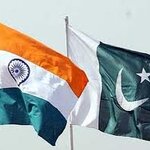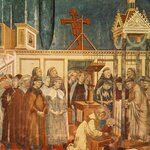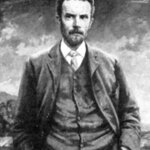Science History

What really comes to your mind when you read the title?? i am not asking
this in the Shiv Khera-You can Win style... instead this question
decides your fitness level to comprehend the blog to follow..
a) Unification of Indo-Pak- Don't Read!!! i guess my blog is meant for lesser mortals.
b) Unification of the sexes??? SORRY!!! The blog will require a bit more IQ...
c) GUT??? BINGO!! Read On.....
It all started with a bearded man gazing up at the night sky
through a self invented telescope who then went on to propose the then
controversial heliocentric model of the universe which…

Ibn al-Haytham can be called the father of modern optics. His 11th-century Book of Optics, which was published 1000 years ago, is considered by some to be in the same league as Newton's Principia regarding its influence in physics, yet very little is known about the writer.
Science 2.0 fave Jennifer Ouellette of Cocktail Party Physics tackles the topic in Physics World, with one of those semi-historical accounts of al-Haytham's life when he was banished from society and deprived of books and came up with his revolutionary theories about the form and passage of light.
Ouellette…

In the category of lesser-known holidays that could be celebrated on December 25th, the coronation of William of Normandy in 1066 A.D. as first King of what we know as modern England would have to be considered. It was the last time a foreign nation would conquer the island nation and years later the Brits gave us all Shakespeare, Christmas Island and America.
But the date was obviously important to Christianity long before that and so other important events were held on the same day. Charlemagne was made Holy Roman Emperor on Christmas Day, 800 A.D. Pope Leo III…

... India, actually.
Today, Wikipedia flagged up a new article, Coffee production in India, with a interesting piece of history. Quoting in full from the article:
Coffee growing has a long history that is attributed first to Ethiopia and then to Arabia, mostly to Yemen. However, the earliest history is traced to 875 AD according to the Bibliotheque Nationale in Paris. The original source is also traced to Ethiopia from where it was brought to Arabia in the 15th century. The Indian context started with an Indian Muslim saint, Baba Budan, while on a pilgrimage to Mecca, smuggled seven…

A Waymark Called Hvitsark
The Vikings did not use charts and instruments to navigate the open seas. Having developed skills in coastal navigation they extended those skills to pelagic navigation, or 'island-hopping'. Using the sun as a reference to determine where south lies, the Vikings could sail a reasonably accurate course. If the wind was steady, the wind itself could be used as an aid to direction if the sun was hidden by heavy cloud. It was only when wind and sun both failed the navigator that he was likely to miss his mark.
A Viking ship sailing on a beam reach…

At The Hazard Of His EarsWhat has the hazard of a person's ears to do with science history?
The history of Arctic science, exploration and discovery is sprinkled with many as yet unsolved mysteries, many concerning the meanings of words in old documents. In this, the first article in a short series, I present my thoughts on some of these mysteries for discussion. By clarifying an obscure passage in an old document we may add to its credibility as a source of historical or scientific data. Thus the solving of these mysteries will - I suggest - add to our knowledge of Arctic…

Having read the biography of Oliver Heaviside, I remain aware that I am not really au fait with inductance as I am with resistance and capacitance. Searching without much success for a textbook that would explain it in a way I could understand, I came upon A Treatise on Electricity and Magnetism - Volume 2 by James Clerk Maxwell. Turning to the relevant section, my eye fell upon this:
“It was perhaps for the advantage of science that Faraday, though thoroughly conscious of the fundamental forms of space, time, and force, was not a professed mathematician. He was not tempted to…

“England is the paradise of individuality, eccentricity, heresy, anomalies.”
So wrote George Santayana http://en.wikipedia.org/wiki/George_Santayana in 1922.
Thus begin a few nuggets that I would like to share with you from a rich fruit cake of a book that I am reading, Oliver Heaviside: The Life, Work, and Times of an Electrical Genius of the Victorian Age by Paul J. Nahin.
After a mostly self-taught technical education in advanced electrical and mathematical matters, Heaviside engaged in a stupendously nasty and lengthy battle with William Preece, the engineering head of the Post Office…

Sydney Brenner and Francis Crick shared a lab from 1956 to 1977 and in boxes of papers donated to Cold Spring Harbor Laboratory Library, some choice bits of biology history were discovered and Nature was first with the story. Crick thought his earlier personal papers had been thrown out by a secretary, but it turns out some still existed and had been mixed with Brenner's.
Maurice Wilkins, the ‘third man of the double helix’, who was at King's College London with Rosalind Franklin(1) while Watson and Crick were at the Cavendish Laboratory in Cambridge, had some of his correspondence to…

Even though Halley's Comet has a regular orbit it's not an easy task to map its appearances throughout history - and it may be that one of those appearances matches an ancient Greek testimony and has only now been realized, write Daniel W. Graham and Eric Hintz in the Journal of Cosmology, which would make it the first scientific claim about the famous extraterrestrial event.
In 1705, Edmond Halley used Newtonian theory and predicted the return of a comet seen in 1682. It did return as predicted, in 1758, putting Halley on the stellar map and driving a stake into the evil hearts of…